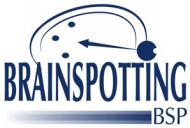A Therapist’s Toolbox – Expedites Freedom for You
Illustrated here are a few of the tools used by skilled therapists to facilitate change and freedom. While this list is not intended to be exhaustive, and the descriptions are brief and undetailed, it’s included to offer explanation of these terms.

Cognitive Behavioral Therapy (Compassion and Motivation-Based Treatment)
This form of therapy targets specific thought patterns and behaviors that are causing distress in a patient’s life. The main goal is to recognize destructive patterns within the patient’s life and help to break and redirect them towards a more positive outlook.
The approach has been proven effective in the treatment of depression, anxiety, and substance abuse, as well as personality, eating and psychotic disorders.
There are six phases, starting with the assessment of the specific problem patterns in the patient’s life and ending with post-treatment and follow up to ensure that these patterns have been broken and dealt with effectively.
Psychodynamic Therapy
The theory behind Psychodynamic Therapy is that the patient has adapted badly to negative experiences and that these failed adaptations are working at an unconscious level, causing significant distress in day-to-day life.
These internal conflicts–called maladaptions–often begin in childhood as a result of bad and sometimes traumatic experiences, and disturb healthy mental and emotional development. An adult patient may have no awareness of these internal maladaptions, and carry with them the effects of trauma every day without recognizing its effect on their life.
The goal of therapy is to uncover the events that caused the maladaptions and help the patient to work through the memories of those events. Psychodynamic Therapy also seeks to build a bond between the patient and therapist, encouraging trust in order to create a safe environment for the patient’s recovery.
Mindfulness
Based on concepts which have their origins in Buddhist meditation, mindfulness has been developed gradually by therapists since the 1970s for use in clinical psychology and psychiatry.
Though the concept has been defined several different ways throughout the years, it is in essence a method of focusing the mind. Feelings of anxiety often cause us to worry about the past and future and problems over which we may have no control. These chaotic thoughts can cause distress in daily life, making it difficult to enjoy living.
The goal of the technique is to bring the patient’s focus back to the present, to accept every experience for what it is without added judgment or analysis and to live from moment to moment, without worrying about the past or future and other things that can’t be changed. Mindfulness is effective in alleviating stress and tension associated with anxiety and depression.
Brainspotting
Brainspotting is primarily used in working with anxiety, dissociation and cases of extreme trauma. A “brainspot” is an eye position that directly connects to a point of activity in the brain that holds the energy and emotion originally caused by trauma. These systems of memory are located by observing eye placement in relation to internally experienced responses during therapy.
This approach promotes healing on a cellular level, accessing the physical connection to the patient’s pain and trauma. By targeting these systems of trauma and working to release the tension they cause, the brain is able to naturally heal itself.
This innovative form of therapy also focuses on locating healthy, strong places in the patient’s psyche and helping them to access those places in moments of distress. Brainspotting has been used to effectively treat Post Traumatic Stress Disorder, Dissociative Identity Disorder and other trauma and anxiety related mental illnesses.
Task-Centered approach
This approach was developed by Dr. Patrick Carnes for the treatment of sexual addiction. The method breaks down recovery from addiction into 30 tasks with the ultimate goal of leading the patient towards healthier relationships and sex life.
Each task has accompanying activities and goals, making the process of recovery less daunting through its step by step approach. This method is intended to be used as an addition to primary treatment, twelve step programs and in-patient/out-patient care.
Energy Field Therapy
This form of therapy works with the theory that the of energy in a person can become blocked or disrupted by diseases of the mind and body as well as by traumatic experiences. By opening up the energy flow, the body’s ability to properly heal itself is restored.
The therapist will scan the patient’s body, checking for areas where energy is blocked, and work to alleviate the blockage. Because this method of therapy promotes the body’s natural healing abilities, it can be used to treat any illness.
Energy field therapy has been proven effective in Cerebral Palsy, head injuries and migraines, as well as depression, allergies and panic disorders, among other afflictions.




